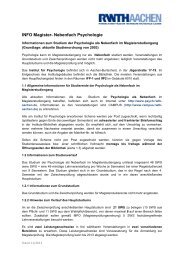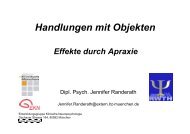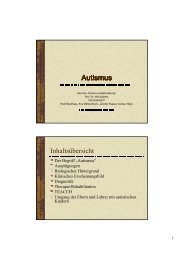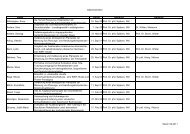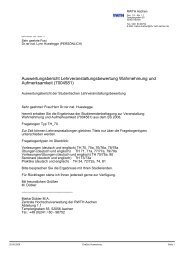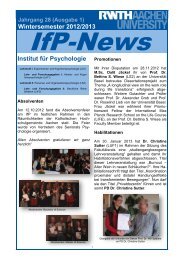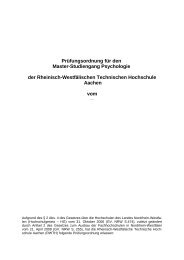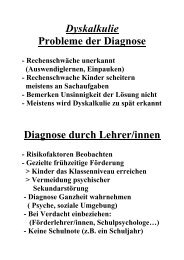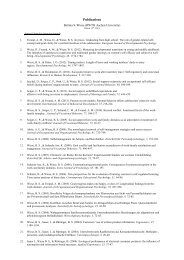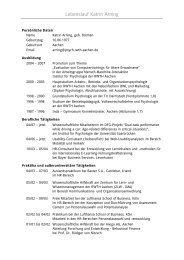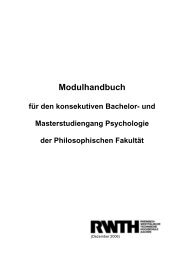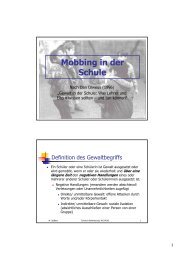1 Effects of Sensorimotor Transformations with Graphical Input ...
1 Effects of Sensorimotor Transformations with Graphical Input ...
1 Effects of Sensorimotor Transformations with Graphical Input ...
Create successful ePaper yourself
Turn your PDF publications into a flip-book with our unique Google optimized e-Paper software.
movements were kept constant, Fitts’ law should again hold for the action-effect movements<br />
(i.e. the cursor movements) produced by different gains.<br />
2. Experiment 1<br />
<strong>Sensorimotor</strong> transformations <strong>of</strong> touchpad and mini-joystick are basically different and<br />
represent different classes <strong>of</strong> input devices. The touchpad is an isotonic device. Its gain is a<br />
function <strong>of</strong> finger motion to cursor motion. The mini-joystick represents an isometric device,<br />
i.e. the gain is a function <strong>of</strong> finger force to cursor speed. To compare device performance in a<br />
precisely and methodologically objective manner, a number <strong>of</strong> input and output factors have<br />
to be considered, e.g. differences in receptor-effector processes, sensitivity <strong>of</strong> device and<br />
cursor speed. In accordance <strong>with</strong> the action-effect account we expect the more corresponding<br />
input-output transformation <strong>of</strong> the touchpad to be used more efficiently than the less<br />
corresponding transformation <strong>of</strong> the mini-joystick. Also in accordance <strong>with</strong> the action-effect<br />
account we predict Fitts’ law to hold for cursor movements produced by the mini-joystick as<br />
well, although this input device does not require a translational movement <strong>of</strong> the hand.<br />
2.1 Method<br />
2.1.1 Pretest<br />
The experimental comparison <strong>of</strong> input devices <strong>with</strong> different input-output parameters reveals<br />
methodological problems. Note that the two input devices differ in several features too, apart<br />
from transforming finger motion (isotonic) and finger force (isometric) into cursor<br />
movements. These features are inherent properties <strong>of</strong> the devices and are not aimed at in the<br />
present study. However, to minimize the differences and to allow an experimental comparison<br />
<strong>of</strong> performance we measured the output parameters <strong>of</strong> each device and adjusted cursor speed<br />
on a similar level (for the methodology <strong>of</strong> the pretest in more detail see Sutter, 2007).<br />
6



